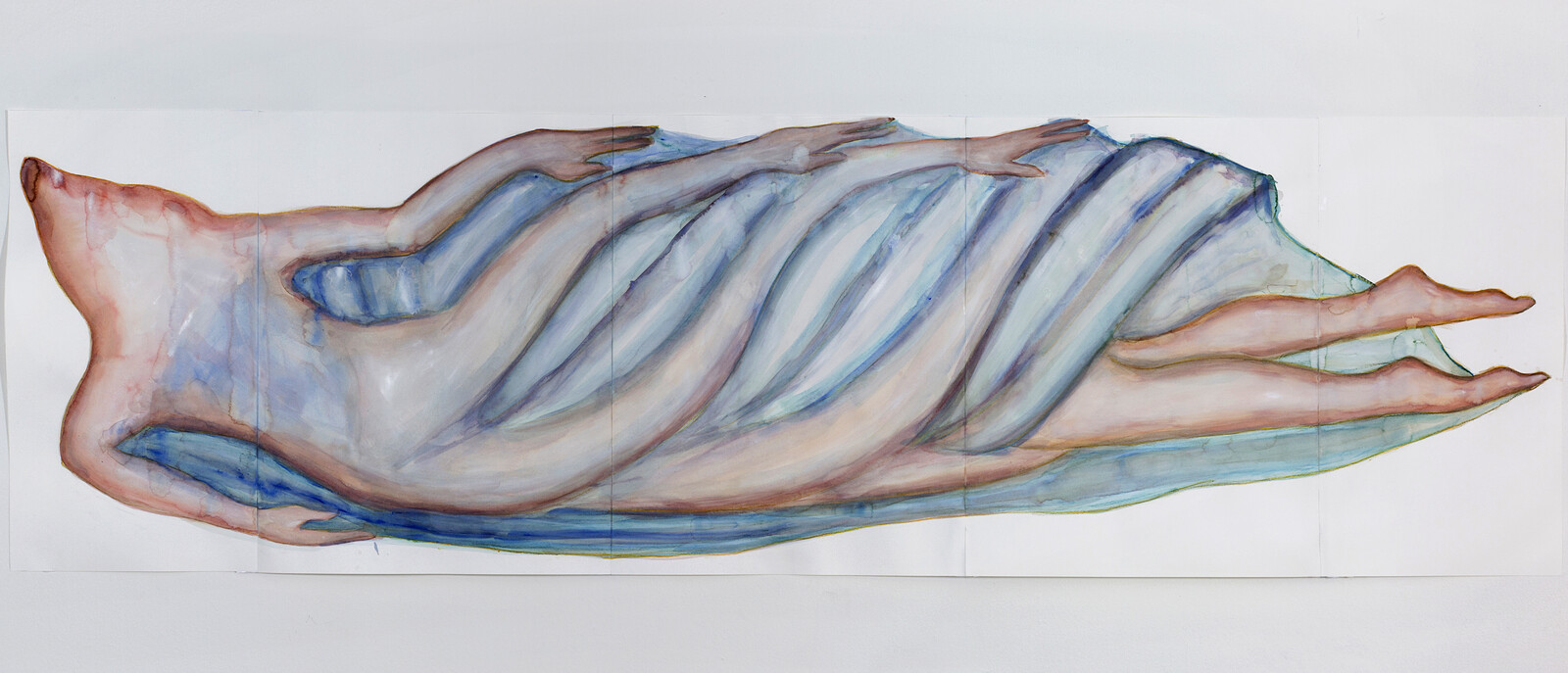You may write me down in history
With your bitter, twisted lies,
You may trod me in the very dirt
But still, like dust, I’ll rise.—Maya Angelou (1928–2014)
1. The Carriers and the Systems
I am under the impression that when a woman reaches a certain position, all the privileges that this position has implied historically are already gone. It is very often the case that a woman’s arrival at a high level of influence within an organization is also an indicator of an internal crisis that is going to affect the whole organization. It is often said that there is an increase of women directors at mid-sized institutions (like Kunstvereine in Germany, Kunsthalles, and other non-for-profit structures) and yet this abundance is accompanied by talk of an institutional crisis, and a negative development of the budget and the staff, together with a demand of the newly appointed women directors to compensate for the lack of third-party funding for the institutions. To name one of the most salient cases I experienced: before the establishment of the Guggenheim Museum in Bilbao, Sala Rekalde was the most important space for contemporary art in the city and had always been directed by men. However, this changed with the arrival of a bigger and much more internationally recognized institution. Public budgets moved towards the new player, and before completely closing down the old structure, a team of women directors and curators were put in place to study the continuing viability of Sala Rekalde. These kind of displacements took place not only in Spain, but all over Europe. We could study how access to certain structures corresponds with the will on the part of their funding bodies—public and private—to reduce operating costs, to rely on “women’s commitment” to compensate for a negative turn of events. On my part, I experienced firsthand, twice, that the offer to lead or to work in a top position at an art organization implied a desire on the part of the board and the public funding body to reduce costs, a desire that materialized in the salary offered to me. Public and private structures are programmed to source “urgent understanding” from women, and take advantage of our will to participate and to be included. Both times that I helmed major art institutions, only my firm demand to know the salary of my predecessors—men—allowed me to make a forceful case to be paid not less or as much as they had been paid, but a bit more, so that the position would continue to be perceived by all parties involved as an important one. And here is my contention: it is crucial not only to count the number of positions women occupy, but also the salaries they earn and the budgets and teams with which they operate. And this applies to all cultural institutions—not only exhibiting institutions but also educational ones.
On the same note, in any discussion on equality in the terms of contracts offered to women art professionals, it is important to include how the quality of these contracts—or lack thereof—negatively impacts the otherwise positive development of women assuming increasingly prominent positions. At certain public and private institutions, age and work experience affect the salary offered, but how can we be sure that women’s “experience” is valued the same way as that of men? Are there women in leading positions in the public sector who do not have a proper contract, but are instead hired as self-employed freelancers? The answer—at least in Spain—is yes.
Examining and reporting on the institutional and structural sources of inequality can provoke discomfort among both men and women. There is the discomfort of losing one’s privileges, the discomfort of demanding structural change to make room for the many new realities that gender diversity entails, and the discomfort of discovering the enormous tasks we still need to undertake. One of these tasks is to argue that equality is definitely not synonymous with the “same”; nor does it correspond to the idea of a “fifty/fifty” share. Rather, equality implies the process of arriving at a place where the conditions and the virtues of our work are perceived as equivalent to those of our male counterparts. Therefore, it is not only a question of securing certain numbers, but of also securing the conditions, the laws, and the language that bring about equality. And this quest we share with all individuals and social movements struggling for equality. We do need quotas; however, we also need a much deeper and more profound metamorphosis of our social and cultural organizations, one that cannot be reached merely through “equal” numbers. In order to reach equality, we need to engage in the elaboration and the practical realization of a whole host of measures that can only be accomplished through excess—an excess of care, of attentiveness to needs—in order to reshape individual and collective behavior as well as the imagination of power and its management.
2. Setting Up the Field
In my formative years, I was only educated by men. It was they who taught me that quotas are anti-feminist, since all individuals should aim for excellence, and quota systems prevent individuals from being evaluated based on their own merits. In defense of quotas, however, it must be noted that without the opportunity to be as mediocre as a man at the same job, it is difficult to assess one’s capabilities. And so, I think that quotas are essential today—at least transitionally—since they allow us to finally access the same terrain as men. Yes, give me the job, so that I can have exactly the same opportunities and chances to succeed or fail. Give me the solo exhibition so that I can show whether the work does or does not bring visitors.
I am rather pessimistic about the possibility of rapid improvement in women’s working conditions in arts and culture, even as social awareness of gender inequality is spreading. The recent dismissals of highly qualified women in leadership positions in the museum sector, and the arguments used to support their dismissal, show that the careers of those doing the firing is much less negatively affected than the careers of the women fired. And for this reason I see great potential in introducing the artifice of “positive excess” mentioned before. For example, if the inability to manage teams is cited as a reason for our failures, we also need to question if teams are responding differently to female versus male bosses. Authority is not perceived equally by men and women; norms of language and social interaction determine different gender behaviors. This is a generalization, but if women are accused of a certain inability to delegate, one reason might be that employees may carry out their tasks differently when these are assigned by a woman. If women are accused of losing their temper, we may need to ask if employees are willing to accept the authority of a women as readily as they accept the authority of a man. Education plays a major role in helping us all accept different ways of organizing relations and power in institutions, universities, boards, and councils. Professional opportunities are not enough if women cannot impact the way they are perceived by others. We need to name the dangers women face, but we must also be flexible enough to play with the entrenched structures long enough to find ways of working together that are more equitable. By adopting preceding models, we are adopting their symbolic values as well.
In this respect, education, which is already a form of artifice (artificially proposing ways of acting and thinking), has great potential as an arena for exercising possibilities for social coexistence in the arts. We often say that gender equality is a question of awareness, of information, of values, of authority at work; but it is also a question of training in career management and professional networking. Can we introduce networking models that support equal opportunities for artists of all genders? Can art schools collaborate with art institutions to narrow the gap between the very equal presence of women in art education and their unequal presence in museums and galleries?
It seems preposterous today to educate women artists under the assumption that they have the same opportunities as men, because reality says otherwise. Therefore, we need to venture new ways of making art education relevant to the careers of women artists. How can one convey truthfully the conditions that women artists face in their careers? What needs to change in art education? What new support structures, mentoring relationships, and networking opportunities might help secure equality for women artists, and for all women professionals in the arts?
3. New Equalities
For many decades, women’s responses to the unequal conditions in the art world have taken many forms: an emphasis on the importance of producing and supporting “alternative” organizational models; on the value of working collectively; on the need to question and alter established ways of doing things, from display formats to the language of art to the scales at which we work; and so on. These efforts—if added to the rich and diverse literature and art programs that women have created—have been massive. I have taken part in these programs and debates, and as a result, I have learned to think about the mission of institutions in a fundamentally different way. Through these discursive environments I have discovered not only the conditions that have defined gender inequality in “my time,” but also those in other times. I have encountered a multitude of artistic practices that not only make an impact on viewers, but that also shape public perceptions of freedom, democracy, and society. A number of art institutions, both large and small, have offered incredible public programs that have created a different, more equitable network of art and discourse. In Spain, the public programs of the Museum of Contemporary Art in Barcelona in the late 1990s were especially influential, along with those of Casco, a space for art and social design in Utrecht, and those of even smaller artist-run spaces like Signal in Malmö, and e-flux’s United Nations Plaza program in Berlin … just to highlight a few examples among the many that have helped redefine the economic and gender conditions of the art world.
However, I also have the feeling that these efforts, while absolutely worthwhile, have contributed to reifying the dichotomy between, on the one hand, male-oriented pragmatic corporatism, and on the other, a clichéd female idealism. But today I see a different energy, one issuing a simple but more fundamental demand: real equality. Real equality requires difficult measures, such as actively seeking to create distortions in present structures in order to study the new behaviors that will produce equality in a more natural/balanced way. Real equality calls for pushing existing conditions to the limit, which helps to dismantle them. For example, although 50 percent of art students are female, how they behave, express themselves, and—in general—avoid compromise relates to how they are made into an artificial minority from an early age, and brought up to perceive their choice of “becoming an artist” and their position in public space as less important than those of men. Because of this, establishing truly equal conditions may require a series of bold positive actions, considering young female artists very differently in order that a whole community be obligated to treat them differently.
One of the most incredible aspects of the #MeToo movement is the force with which it has been able to address the violence—or put differently, the dynamic and continuous discomfort—we all need to face for things to change, and for change to last. Since women have not historically been granted the public space to speak, language has never been our greatest ally. We have been very eloquent when it comes to shining a light, rendering transparent, and raising awareness, but we have neglected to articulate the millions of micro-exercises that structures and individuals must undertake with us to learn and to adapt to the discomfort of losing.
4. The Discomfort of Losing
Quotas seem to be the end of freedom. Supposedly, freedom is the ability to act “naturally,” and to aim for quality above all else … and yet this “freedom” has not helped to develop the structures or the sensitivities that allow women to have the same opportunities as men. Quotas are seen as something from the past—a twentieth-century measure-—and yet, we still need to figure out how to surpass them, not by relying on the same schemas, but by introducing even harder challenges than quotas: a new training that is so unpleasant—at least for a while—as to radically erradicate all systemic violence that perpetuates the many inequalities that coexist, not just gender inequality.
I believe we have been unable to speak positively about the necessary discomfort that any change to established behaviors implies. The change we need is not going to happen without pain, and it is only through dialogue, with all genders cooperating, that we can produce new possibilities. I could give many examples of discomfort, which might sound banal though they are not. I am constantly invited by the diversity office of my university—which is run by a team of women—to participate in diversity-related events. It is clear that being one of the only women working in the upper echelons, being a foreigner … points to the fact that I am an exception. I do not oppose participating in these events, precisely because they can help attract those who identify with my situation, but I want to raise two questions: Why is it that work and meeting schedules at universities and other workplaces are tailored for men and do not—to give a simple example—take into account that a mother might need to drop off her child at school in the morning? And why don’t women publicly address the fact that almost no schools for children have a schedule that fits with the forty-hour-a-week schedule of a working mother? When talking on the phone with a woman from the diversity office of my university, I requested that the timing of director-level meetings be changed because I feel awkward always joining these meeting a little late after dropping off my child at school. I could sense that the women did not regard the subject as being in the domain of the diversity office. She seemed to assume that I should be able to organize my time so as to arrive at these meetings punctually, and that doing so was an unspoken responsibility of my position. But what does this assumption entail? It entails my silence, and the silence of so many other women who feel uncomfortable discussing the logistical difficulties of being a mother in the art field. Why are we not openly talking about the changes that need to be made so mothers don’t have to be turn themselves into logistics machines? The realm of the personal can never be divorced from the realm of the structural.
It goes back to what women know all too well: we get paid less for doing the same work as our male peers. This enrages me. Not only is this situation unequal, but it operates by the same logic I mentioned at the beginning of this text: since women receive less money for the same work (even if they are better at it), when they become mothers and have a host of new responsibilities they are simply expected to work even harder. In this context, equality would mean not simply giving women the same salary as men, but rather carefully looking at the conditions that may require extra economic support.
Many rich Western countries have policies that provide child-care benefits: Austria, Denmark, Finland, France, Germany, Ireland, Luxembourg, Netherlands, Norway, Sweden, and the UK. The list could include many other countries if we incorporated tax benefits rather than just cash benefits. The differences among countries are significant; they vary depending on the number of children you have, and most still fail to recognize and provide for the special needs of single parents. Nonetheless, if you are lucky enough live in one of these countries, you probably still face an incredible amount logistical and financial challenges resulting from the steep limitations placed on your time by the school and state child-care systems. It is rare for a mother to have access to full-day care, every day, seven days a week, so that she can go to work like any other person who does not have a child. In many European countries—Germany and Switzerland, for example—the public school day is a “half-day-school” (Halbtagsschule) running from 8am until 1pm. Since 2000, new day-long school schedules have slowly been implemented, but the literature on this development focuses on the costs of expanding school hours and the effects on the leisure time of children and young people, while the needs of working mothers are largely absent from the discussion.
Even if you are lucky enough to find a full-day school not far from your home, you still have to organize life after work. The art world places enormous importance on informal networking—evening events, dinners, openings. You may also be expected to leave town to oversee an install or give a talk. This is what it takes to remain visible in the field. This effort to remain visible takes place in absolute silence; women seldom address the subject outside trusted circles. Everyone seems to manage, but there is no talk about what all of this means for women and for the art world a whole. You could say that this is “my problem,” but I assume that it a problem shared by many artists, curators, and other art professionals with children. Yes, from the perspective of someone working full time with a salary, you can argue that having children is a personal choice and that everyone should take responsibility for their own choices without expecting the world to adapt to them. And yet, I cannot lie: I expect the whole world to adapt, to bend, to make room, to accommodate all the differences that give our society hope for the future. I still believe that not expecting that this would accommodate one’s needs means compromising on the possibility of achieving the maximum level of responsiveness towards all the diverse needs that must coexist in order for ours to be a free world.
Even if you still believe that this is not your problem, it may well become your problem, since the challenges of having children while maintaining a career profoundly affect the fulfillment of women at work. I am still shocked when I have conversations with young women in the art field who see reproduction as a career setback, one from which they may not recover.







5. Take Me to Your Leader
The perception of women’s inability to fully commit to work reinforces structures that regard women, as great middle managers, because of their resourcefulness, but not fit for directorial responsibilities. At the same time, many women believe that directorial positions—as currently structured—would make it hard for them to find space and time for their private responsibilities, so they decide not to pursue these positions in the first place. All of this is well known. What is not well understood is why we have not initiated a debate on how to transform work structures in order to implement equality—not only framing equality as a right, but also as a measure that can radically transform the way the figure of the “working mother” is understood. Changing the working hours of teams that are made up of a majority of women may not be such a huge deal, but we can take this further, so that if a woman with children is not be able to accommodate her family life, is there a possibility of two women sharing a directorial position? Furthermore, if an equal number of women occupied high-level positions, social life organized around this reality would slowly adjust—the same way in which conversations during informal gatherings affect the formal decisions that are made during working hours.
In recent decades we have seen an increase in the awareness of the challenges women face in the workplace and in society at large, yet the situation for women cannot be described as bright. Going back to the “positive excess” of support for women that may be required to achieve equality in the various spheres of social life (for example, in art schools): it may seem an excessive measure in itself, but educating women as if equality already exists is a form of “negative excess.” In galleries, art by women sells for at least 20 percent less than art by men, and in auctions this disparity reaches 50 percent. Women are a minority in the market, and they receive far fewer invitations to participate in exhibitions—to be part of the spheres of influence. So, it seems that it is our duty to create measures to force the situation to change: if we cannot regulate the market, we can certainly regulate public spaces. The same goes for boards and sponsors. You cannot control what a board thinks, but reforming the boards to match the values of a democratic, equal society is entirely possible. Countries like Sweden have taken the lead in making it mandatory to have 50 percent representation of women on boards and councils.
We cannot expect to realize our rights without changing the “nests” in which these rights are exercised. We should fight for new policies and measures, not only rights. The art world is very conservative; one could almost call it reactionary, despite its sympathy for left-leaning activism. In fact, perhaps this is part of the problem: maybe all these anti-capitalist and leftist sentiments perpetuate an image of women as ideal “companions” to the revolution, whose primary trait is pragmatism. But it is precisely for the sake of avoiding pragmatism (both of the neoliberal and the anti-capitalist varieties) that we need to introduce discomfort—a wave of measures that can alter the banal behaviors that define our position daily. When I say a “wave,” I also mean a tide, a volume that rises and overtakes certain terrains, then retreats, leaving the terrain saturated with new ideas and policies that will accommodate the gigantic differences between female and male needs, so we can work on equal terms, in harmonious dissonance.









